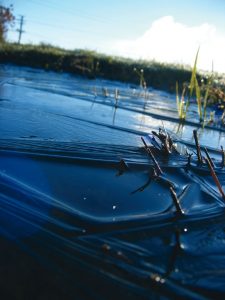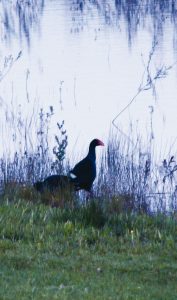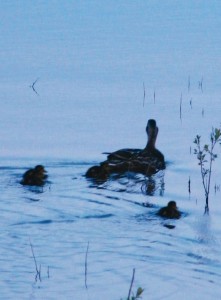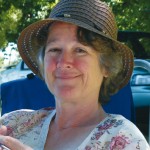Changing Landscapes
I live across the road from an ‘occasional’ pond. When there is prolonged rain, the pond fills. A huge variety of life is attracted: swans, gulls, mallards, wading birds, frogs, model boat enthusiasts, and sculptors who create public works of art, such as the “Loch Ness Monster”!
When the rains stop and the water begins to dry up, other creatures appear. Rabbits, sparrows, butterflies, people flying kites. A changing landscape. Daily a different, inspirational vista. No day better or worse than another; simply different.

Some creatures are adaptable: they make the best of any situation, any landscape. Consider the black-backed gull. Others perish with the slightest change in conditions. Others try for a while but eventually are unable to cope with the vagaries of the changing landscape. They move on to more hospitable environments.
The pond never reverts to its previous state: it cannot. Holes are formed or filled in. Grasses die or seeds germinate. Debris accumulates or is shifted around by the movement of the water. No man-made or natural intervention can keep it the same, keep it constant. It is a fluid, dynamic, evolving landscape. The only constants: God is the breath, the word that creates this environment; God is revealed.
Our human landscape is also changing. The NZ Census records significant shifts in our population over the past forty years. There are significantly more people over the age of 50. There is a comparable decrease in the number of children under 16 years.
The structure of household units has also undergone considerable change; situations almost unimaginable forty years ago. Traditional two parent families. Single parent families. YUPPIES. DINKIES. LATs. Remarried couples. Blended families. Retirement homes and villages. Adult children living at home. Several families living in one dwelling. Grandparents with full-time care of grandchildren. Over-65’s working full-time in paid employment. Significant immigration, with ethnic communities thriving.
The way we live together is in a constant state of flux. We cannot go back to some golden age, arbitrarily fixed as ‘ideal’. It no longer exists, nor can it be artificially created or sustained. Our population demographic is a changing landscape. The only constants: each human being is created in the image of God; each human being is created to be in relationship, as God is in relationship.
The external properties of our eucharistic communities is another changing landscape. The sanctuary varies according to the theology, spirituality and personal preference of the pastor. Furnishings are moved or replaced. Art, statues, draperies, stained glass, sacred vessels, mass times, language, rituals, music and floral arrangements may vary week to week, season to season, pastor to pastor. Some of the changes reflect the liturgical seasons. Others are random.
And, as in the pond, each new environment, each change of landscape, will sustain and nourish some, but will indicate a time to migrate for others, who need to find a more life-giving and nurturing environment. The only constants: God is in stability and God is in the seeking
So too, our church communities are a changing landscape. The composition of our worshipping communty is evolving. We are a diverse group ethnically. We are now more broadly educated, more spiritually literate. Some seek the essence of God in each spiritual tradition, looking for points of encounter, not difference. One person asked me to look at my hand, fingers spread. Each of the major spiritual traditions was represented at the tip of each finger. But as we spiritually mature, and travel toward the centre, we come to see that we all seek the same thing: God, centred in the palm of the hand.
Many seek to be inclusive, not exclusive. Others compare and contrast contemporary and ancient, scientific, ecological, mythological and theological thought with commonly held viewpoints. Seeking, always, to form and inform their consciences, through the lens of faith: knowing we are loved. Many hope to empower the individual, the community, not to surrender power and control to institutions and bureaucracies. All pray.

Every instance that anyone of us does any one of these things, and many more, our faith community is changed. Irrevocably. Just as the pond both reflects and adapts to the rainfall and to its inhabitants, so too, the way we worship, the way we encounter God in our eucharistic communities, must acknowledge, reflect, and adapt to who we are and how we live.
I find myself looking at the changes in my Catholic community and wonder if I can adapt once again. Some people find a niche and thrive despite the changes around them. Some embrace the change as it complements and nourishes their own spiritual journey. Others are the landscape artists: they bring about change from within. Some migrate to more life-giving faith communities, or drift into a ‘no-man’s land’, operating in spiritual survival mode. Some become nomadic spiritual seekers, embracing enlightenment where it is found, then moving on. For others, the kernel of faith becomes dormant, lying fallow, until optimal conditions allow it to flourish once more.
Josephine Hart says, “There is an eternal landscape, a geography of the soul; we search for its outlines all of our lives.” Changing landscapes are an integral part of that search. But we each respond to change in a different way. Each one of us is a pilgrim, simply finding our way home.

 Entries(RSS)
Entries(RSS)